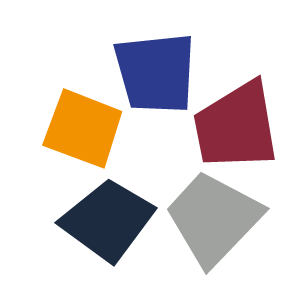From October to December 2024, Rune Saugmann (Tampere University) and Frank once again introduced the students of Tampere University to a new, interactive mode of instruction, combining visual research and peace education, in a course titled Interactive Peace Imagery: Eastern Europe in Camera.
Interactive Peace Imagery (IPI) utilizes digitization and active interaction in terms of seeing – changing – sharing: students engage with visual images by regarding existing images, elaborating on them, changing them and sharing the changed images with their fellow students. By doing so, they become involved in the production process of images and their responsibility for both the image and the knowledge claims attached to it increases.¹
Funded by the nationwide Expertise in Russian and Eastern European Studies (ExpREES), the course put emphasis on Eastern Europe in general and on Ukraine in particular, reflecting the return of organized, large-scale violence to Europe and the need to think about peace and its visualizations even in such dire circumstances.
The students were asked to actively interact with images by engaging with visual representations of peace and security in the context of Eastern Europe. The course specifically targeted the dynamics emerging around the war in Ukraine but did not exclude alternative approaches to Eastern Europe.
We combined two different approaches to aesthetics – the one, focusing on method, emphasizing the role of and the need for creativity and imagination in academic work and insisting on interpretation as an indispensable ingredient of such work,² the other combining sensing and sense-making as suggested in open source investigation: aesthetics “involves sensing – the capacity to register or to be affected, and sense-making – the capacity for such sensing to become knowledge of some kind.”³
In other words, aesthetics, as understood in the course, refers to our capacity to experience the world through our senses and the capacity to make sense of this experience.
Overall, the students seem to have enjoyed this new approach to university teaching, involving them in the process of image and knowledge production to a larger degree than is normally the case. The essays we received at the end of the course testify to the usefulness of IPI as mode of instruction. As one group wrote, IPI’s second step (changing) enabled “reflect[ion] about our collectively accepted way of seeing photographs” thus paving the way to a more critical approach to images.
We hope that the students enjoyed the course as much as we did, and that it increases their attention to the visual everyday politics that surrounds us not only in media coverage of peace and war but across all mediated interaction.
¹ Frank Möller and Rasmus Bellmer, “Interactive Peace Imagery: Integrating Visual Research and Peace Education,” Journal of Peace Education 20:1 (2023), pp. 53–74, https://doi.org/10.1080/17400201.2023.2171374
² See Roland Bleiker, Aesthetics and World Politics (Houndmills: Palgrave, 2009)
³ Matthew Fuller and Eyal Weizman, Investigative Aesthetics: Conflicts and Commons in the Politics of Truth (London, Brooklyn: Verso, 2021), p. 33.
